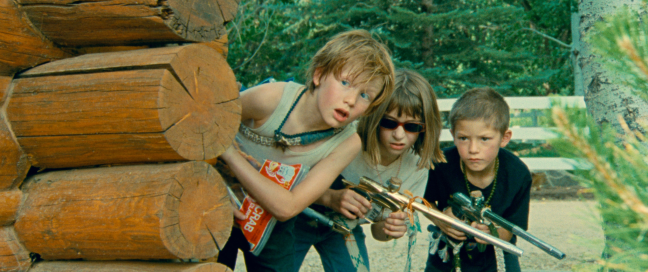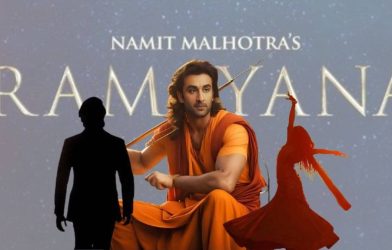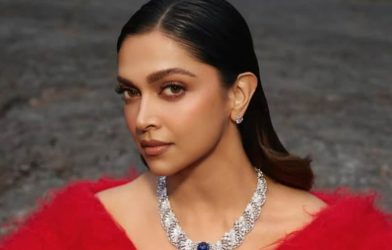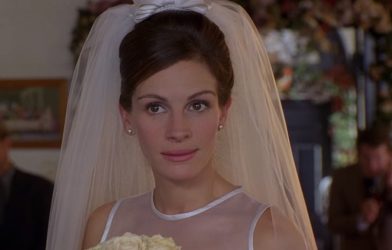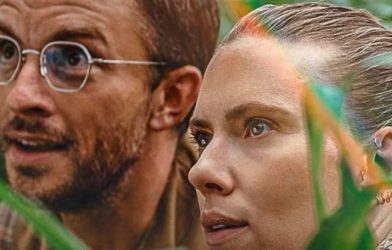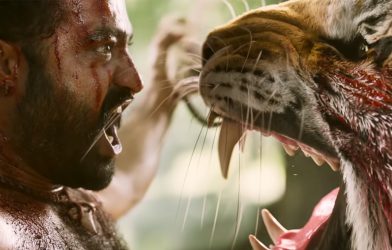Weston Razooli knows that he broke all the rules on his first movie. While some directors ease themselves into feature filmmaking by telling intimate stories that can be confined to one location and a handful of experienced actors, Razooli swung for the fences with “Riddle of Fire.”
The anachronistically nostalgic adventure saga follows three pals who spend a summer afternoon searching for the perfect blueberry pie ingredients in a world filled with witches, fairies, and scheming huntsmen — all with the hope of convincing a bedridden mother to let them get back to playing video games.
The film captures the whimsy of a childhood summer adventure on a scale that manages to feel epic to its pint-sized protagonists and charmingly intimate to adult audiences. But Razooli’s distinct vision forced him to navigate the kinds of logistical challenges that could derail a massive studio production — like shooting on 16mm film with a cast comprised almost entirely of child actors — on a budget that was, in his words, “as indie as it gets.”
But in a recent conversation with IndieWire, the director explained why every painstaking detail was necessary to craft the kind of childhood fantasy he was waiting his whole life to make.
“‘Riddle of Fire’ is definitely a huge gumbo-like mixture of all my favorite films and things that I grew up with. It’s a mix of Miyazaki movies, Kurosawa, Ken Loach, Truffaut, and the original ‘Dragon Ball’ anime,” Razooli said. “It’s kind of like my childhood, but the ultimate version of my own childhood where I had the exact dirt bike and the paintball guns and the freedom that I wanted at that age.”
A film about childhood must begin, naturally, with children. Razooli originally conceived the three kids (a pair of brothers and their best gal pal) at the heart of “Riddle of Fire” as side characters in another script he was writing about high schoolers. But with each subsequent draft, he found himself spending more and more time with the children. He eventually decided to write an entire movie about three kids on an adventure, before realizing that even the most seasoned directors are warned about the challenges that inevitably arise from wrangling kids on set.
Razooli had nothing but positive things to say about the four young actors at the heart of his film (Charlie Stover, Skyler Peters, Phoebe Ferro, and Lorelei Olivia Mote, who plays the fairy the central trio eventually befriend), noting they were the only four performers he called back after receiving dozens of audition tapes. But he can’t help but laugh about the chaos that they sometimes forced him to navigate.

“I do a take, I yell cut, and then they disperse!,” he said with mock exasperation. “Because they all want to look at the camera and the equipment and everything. So resetting would take a while. So I developed this point system where you get a point if you do something well. For example, everyone who resets the fastest would get a point. And whoever has the most points at the end of the day would get a prize, which is usually a prop from that day.”
Razooli was eventually faced with a lesson that every independent filmmaker learns at their own pace: Sometimes, you just have to resort to basic bribery to make your days.
“With kids, the camera is like a magnet. They want to look at the camera like all of the time,” he said. “Jodie [played by Peters] was always spiking that lens. So I literally was like, ‘I’ll give you five dollars for every take you don’t look at the camera.’ And I had to pay him a lot.”
Razooli bonded with his cast by embracing the parallels between the film’s plot and the actual experience of shooting it. He turned the Utah shoot into the ultimate summer camp experience, giving everyone the kind of adventures that inspired him to make the film in the first place.
“My approach was it was kind of like a summer camp,” he said. “It was shooting paintball guns, riding bikes, fly fishing, hiking, jumping into rivers. I was just really upbeat, like ‘Hell yeah, we’re going on a quest!’”
The finished product splits the difference between fairy tales and ’70s Disney adventure films, wrapping audiences in the hazily happy vibes that cloud so many of our childhood memories. When it came time to capture that strain of stylized nostalgia, Razooli never doubted that he had to shoot on 16mm Kodak film.

“It was essential to me to shoot this script on film, especially 16mm,” he said. “I just don’t really buy certain fantasy or sci-fi or period films that are shot digitally. Just personally, I don’t buy it. I watch a lot of movies, so my eyes are very attuned to film vs. digital. I think to me, shooting on film is the right medium if you’re trying to get the right suspension of disbelief from your audience.”
In the end, all of the film’s distinct elements came together to create the bouillabaisse of memories and summertime daydreams that swam through Razooli’s head throughout the two-year process of making it. In his mind, the analog production techniques were the connective tissue that made the entire experience feel like a relic of a bygone era.
“The idea of making this kind of vintage-y kid adventure movie shot on film felt very special to me,” he said. “It’s something that doesn’t happen anymore.”
A Yellow Veil Pictures and Vinegar Syndrome release, “Riddle of Fire” is now playing in theaters.

